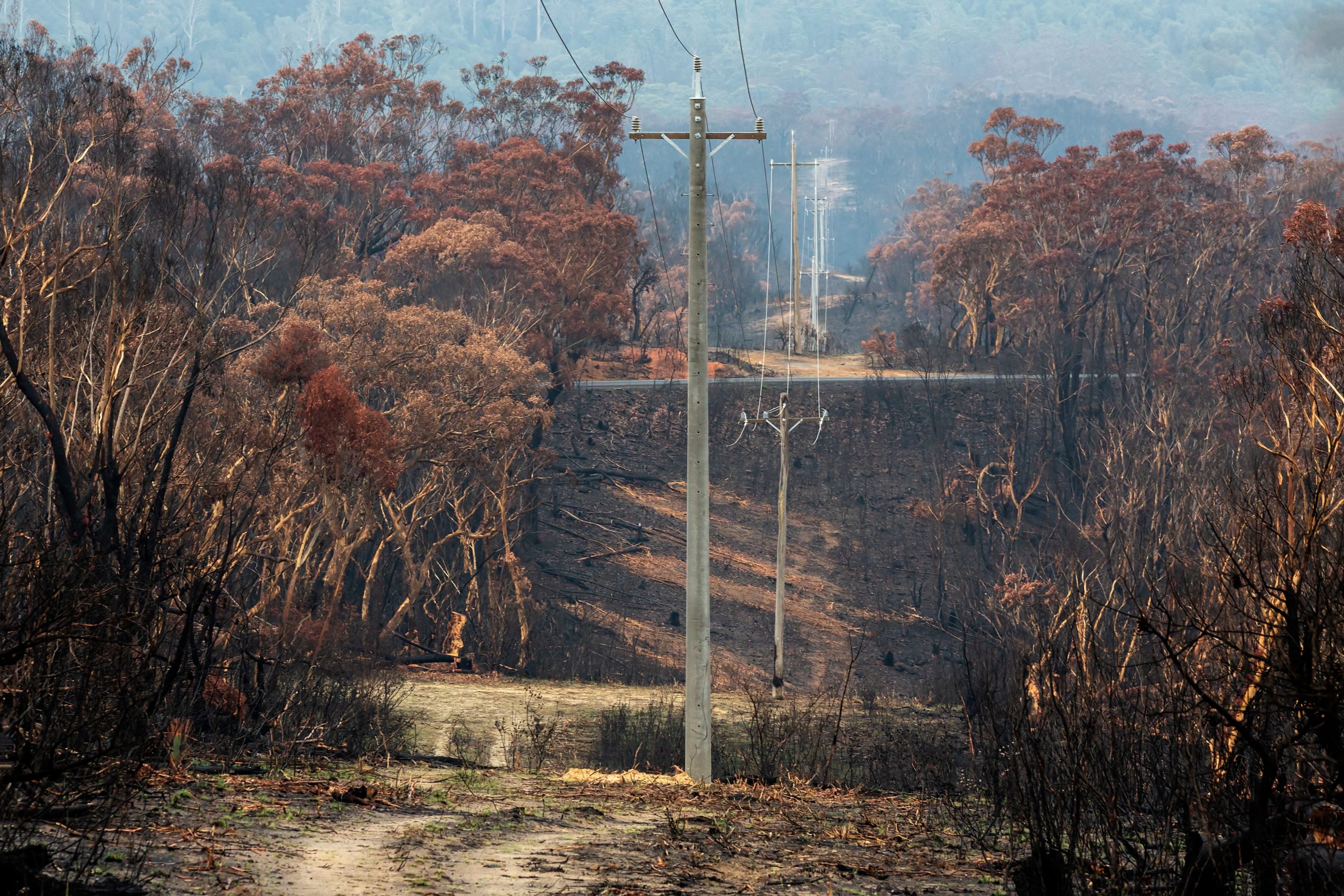Bushfires Royal Commission: energy sector issues
Extreme weather events have forever been a part of the Australian landscape.
In 2019-2020 Australia recorded its worst bushfire season since records began, resulting in a devastating loss of life, property, flora and fauna.
The ferocity of the fires fueled by a season of drought led to fire fronts that were impossible to control. Very quickly communities, often in holiday areas, became isolated. Unable to leave and surrounded by fire, thousands of people were left without power and telecommunications.
Energy networks operate and maintain critical electricity infrastructure that is vulnerable in extreme weather events such as bushfires.
Networks continually inspect, prune and clear around powerlines to reduce the chance they will come into contact with vegetation, which can damage infrastructure and trigger fires and power outages when customers need it most.
Royal Commission into National Natural Disaster Arrangements
The Royal Commission handed down 80 recommendations that provided advice to governments, emergency services, the Australian Defence Force and energy and telecommunications networks.
The Royal Commission acknowledged energy networks already have ‘a good awareness of the risks to their networks and the risks electricity outages pose for others, including on dependent services, communities and individuals’.
Recommendation 9 of the Final Report looked at networks and the critical role they play in ensuring safety of those in bushfire areas in the event of infrastructure damage and subsequent power outages.
The recommendation highlighted the need for networks to identify vulnerable critical infrastructure and identify key risks when faced with extreme weather events. It also encouraged networks to maintain and improve network resilience.
Memorandum of Understanding between ENA and the Communications Alliance
Following the draft recommendation released in mid 2020, Energy Networks Australia and the Communications Alliance signed a Memorandum of Understanding (MOU) to help further improve collaboration and knowledge sharing between the two sectors to better respond to emergency situations.
The MOU sets out to achieve the following objectives:
- improve the safety of communities by mitigating the risks of being isolated due to telecommunications and/or power outages during emergencies;
- improve the sustainability of both telecommunications and power supply services to communities affected by emergencies to support their recovery; and
- targets effective collaboration between telecommunications and electricity networks and coordination of infrastructure in preparing for and responding to emergencies at a local, regional and state level.
The Royal Commission suggested ‘It is vital that mechanisms are in place to facilitate seamless coordination between critical infrastructure operators before, during and after a natural disaster.’
Both ENA and Communications Alliance members operate critical electricity and telecommunications infrastructure which provides vital services and connectivity during emergency events such as severe weather, bushfires and pandemics. It is vital to have a framework in place that supports the energy and telecommunications sectors working more closely together during emergencies and in planning for natural disasters such as bushfires. Both associations met last week to discuss preparedness for the coming season and will meet following the bushfire season to better understand their industries’ responses to any natural disasters.
The role of Stand- Alone Power Systems
The introduction of Stand-Alone Power Systems (SAPS) following a natural disaster enables energy providers to restore power to customers quickly following network damage.
Recommendation (9.72) recognised that while the preference would be to move all critical energy and telecommunication infrastructure underground, that isn’t always feasible with distance and expense being the main deterrents.
Come bushfire season, more SAPS on the ground means fewer overhead lines and a reduced chance that live lines could ignite a bushfire. Another benefit of localised electricity supply during a bushfire is that the electricity supply is more secure, impervious to the effects of other damaged lines across the network. Electricity is crucial during a crisis, enabling other aspects of the critical response plan to be implemented.
While uptake may be relatively small, the benefits would be significant to those who are most vulnerable during a natural disaster, like those living on a remote or rural property. Ensuring energy networks have a range of potential supply solutions will mean networks can continue to improve services at a lower cost.
The Australian Energy Market Commission’s (AEMC) SAPS framework requires that networks seek aspects of the SAPS from the competitive market or an AER waiver – a time-consuming process that will delay SAPS roll-out and prevent widespread implementation. This is in stark contrast with WA’s Wholesale Electricity Market, where a more flexible regulatory regime and government policy focus and ownership is allowing hundreds of SAPS and microgrids to be deployed state-wide. We have previously written about Western Australian electricity provider Horizon Power which has moved to decommission and remove 64km of poles and wires and replace them with stand-alone power systems. Western Power is also rolling out an extensive SAPS program in the South West Interconnected System.
A more pragmatic, less burdensome regulatory approach in the NEM is needed and we look forward to working with the AER in their upcoming ring-fencing review to implement a practical waiver process.



